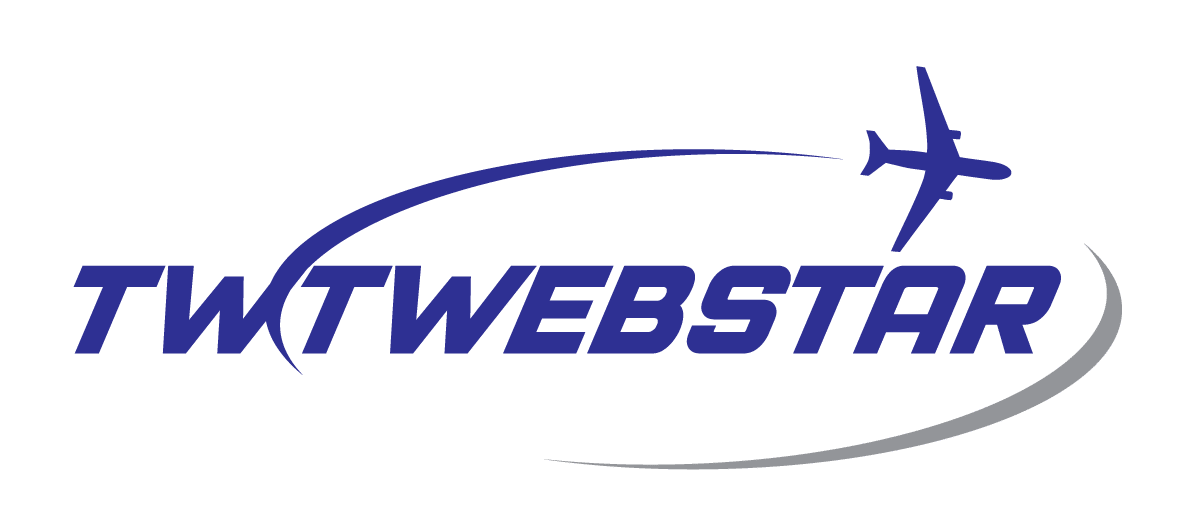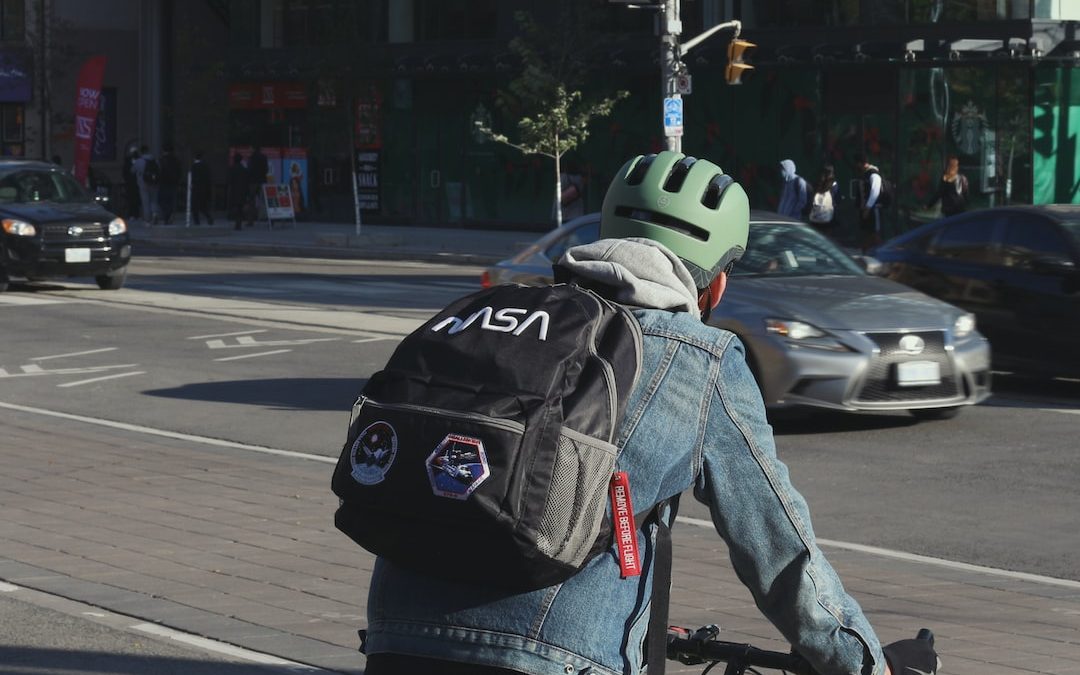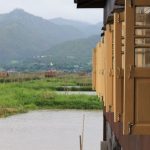Table of Contents
Solving Urban Transportation Problems with Innovative Solutions
Urban transportation is a major issue facing cities around the world. From traffic congestion to air pollution, cities are struggling to find solutions to ensure that their citizens can get from one place to another efficiently and safely. Fortunately, there are a number of innovative solutions that can help cities address their transportation issues.
Electric Vehicles
Electric vehicles (EVs) are becoming increasingly popular as a way to reduce emissions and address traffic congestion. EVs are powered by electricity rather than gasoline, meaning they produce no emissions and are more fuel efficient than traditional vehicles. Additionally, EVs are quieter than gasoline-powered vehicles, leading to less noise pollution in urban areas. Furthermore, EVs are much cheaper to operate than gas-powered vehicles, making them a cost-effective solution for urban transportation.
EVs are also becoming easier to use in cities. Many cities are installing charging stations throughout their downtown areas, making it easier for motorists to charge their EVs. Additionally, many cities are making it easier for motorists to access charging stations by allowing EVs to park in special parking spaces reserved for EV users. Finally, many cities are offering incentives for EV users, such as discounted parking fees or access to carpool lanes.
By utilizing electric vehicles, cities can reduce emissions, improve fuel efficiency, and reduce noise pollution in their downtown areas. Moreover, electric vehicles can help cities save money by reducing their reliance on gasoline-powered vehicles.
Smart Traffic Management
Smart traffic management is another innovative solution that can help cities address their transportation issues. Smart traffic management systems use sensors, cameras, and other technology to monitor and manage traffic flow in real time. By utilizing these systems, cities can better control traffic flow, reducing congestion and improving safety. Additionally, these systems can provide cities with valuable data that can be used to make more informed decisions about the traffic flow in their cities.
Smart traffic management systems can also be used to provide drivers with real-time information about traffic conditions. This can help drivers better plan their routes and reduce the amount of time they spend stuck in traffic. Moreover, these systems can also be used to provide drivers with information about alternative routes or public transportation options, further reducing traffic congestion in cities.
By utilizing smart traffic management systems, cities can reduce traffic congestion, improve safety, and provide drivers with real-time information about traffic conditions. This can help cities make more informed decisions about their traffic flow and better manage their transportation systems.
Public Transportation
Public transportation is another essential component of any urban transportation system. By utilizing public transportation, cities can reduce traffic congestion and improve air quality in their downtown areas. Additionally, public transportation can help cities save money by reducing their reliance on cars and gasoline-powered vehicles.
Public transportation systems can also provide citizens with access to jobs, services, and other areas of the city that may otherwise be inaccessible. By providing citizens with reliable access to these areas, cities can help improve their citizens’ quality of life and reduce economic inequality.
Public transportation systems can also be used to reduce traffic congestion by providing citizens with an alternative to driving their own cars. This can help reduce the number of cars on the road and reduce air pollution from cars.
By utilizing public transportation, cities can reduce traffic congestion, improve air quality, and provide citizens with access to jobs, services, and other areas of the city. This can help cities improve their citizens’ quality of life and reduce economic inequality.
Ride-Sharing Services
Ride-sharing services are quickly becoming an essential part of urban transportation systems. By utilizing these services, cities can reduce traffic congestion and improve air quality in their downtown areas. Additionally, ride-sharing services can provide citizens with access to jobs, services, and other areas of the city that may otherwise be inaccessible.
Ride-sharing services can also help cities save money by reducing their reliance on cars and gasoline-powered vehicles. This can help cities reduce the costs associated with maintaining and operating their transportation systems.
Ride-sharing services can also reduce traffic congestion by providing citizens with an alternative to driving their own cars. This can help reduce the number of cars on the road and reduce air pollution from cars.
By utilizing ride-sharing services, cities can reduce traffic congestion, improve air quality, and provide citizens with access to jobs, services, and other areas of the city. This can help cities improve their citizens’ quality of life and reduce economic inequality.
Autonomous Vehicles
Autonomous vehicles are quickly becoming a major part of urban transportation systems. Autonomous vehicles are vehicles that are capable of driving without the need for a human driver. By utilizing these vehicles, cities can reduce traffic congestion and improve air quality in their downtown areas.
Autonomous vehicles can also provide citizens with access to jobs, services, and other areas of the city that may otherwise be inaccessible. By providing citizens with reliable access to these areas, cities can help improve their citizens’ quality of life and reduce economic inequality.
Autonomous vehicles can also help cities save money by reducing their reliance on cars and gasoline-powered vehicles. This can help cities reduce the costs associated with maintaining and operating their transportation systems.
By utilizing autonomous vehicles, cities can reduce traffic congestion, improve air quality, and provide citizens with access to jobs, services, and other areas of the city. This can help cities improve their citizens’ quality of life and reduce economic inequality.
Adaptive Traffic Signals
Adaptive traffic signals are another important part of any urban transportation system. Adaptive traffic signals are traffic signals that use sensors and cameras to monitor traffic flow in real time. By utilizing these signals, cities can better control traffic flow, reducing congestion and improving safety.
Adaptive traffic signals can also provide cities with valuable data that can be used to make more informed decisions about the traffic flow in their cities. This data can be used to identify areas where traffic is particularly congested and identify potential solutions to reduce congestion.
By utilizing adaptive traffic signals, cities can reduce traffic congestion, improve safety, and provide cities with valuable data about their traffic flow. This can help cities make more informed decisions about their traffic flow and better manage their transportation systems.
Bicycle-Friendly Infrastructure
Bicycle-friendly infrastructure is another important component of any urban transportation system. Bicycle-friendly infrastructure includes bike lanes, bike paths, and bike-sharing programs. These infrastructure improvements can help cities reduce traffic congestion and improve air quality in their downtown areas.
Bicycle-friendly infrastructure can also provide citizens with access to jobs, services, and other areas of the city that may otherwise be inaccessible. By providing citizens with reliable access to these areas, cities can help improve their citizens’ quality of life and reduce economic inequality.
Bicycle-friendly infrastructure can also help cities save money by reducing their reliance on cars and gasoline-powered vehicles. This can help cities reduce the costs associated with maintaining and operating their transportation systems.
By utilizing bicycle-friendly infrastructure, cities can reduce traffic congestion, improve air quality, and provide citizens with access to jobs, services, and other areas of the city. This can help cities improve their citizens’ quality of life and reduce economic inequality.
Intelligent Traffic Lights
Intelligent traffic lights are another innovative solution that can help cities address their transportation issues. Intelligent traffic lights are traffic lights that use sensors, cameras, and other technology to monitor and manage traffic flow in real time. By utilizing these lights, cities can better control traffic flow, reducing congestion and improving safety.
Intelligent traffic lights can also provide cities with valuable data that can be used to make more informed decisions about the traffic flow in their cities. This data can be used to identify areas where traffic is particularly congested and identify potential solutions to reduce congestion.
By utilizing intelligent traffic lights, cities can reduce traffic congestion, improve safety, and provide cities with valuable data about their traffic flow. This can help cities make more informed decisions about their traffic flow and better manage their transportation systems.
Technology-Based Solutions
Technology-based solutions are becoming increasingly popular as a way to address urban transportation issues. Technology-based solutions include apps, websites, and other digital tools that can help cities better manage their transportation systems. For example, apps can be used to provide citizens with real-time information about traffic conditions and alternative routes or public transportation options.
Technology-based solutions can also be used to provide cities with valuable data that can be used to make more informed decisions about the traffic flow in their cities. This data can be used to identify areas where traffic is particularly congested and identify potential solutions to reduce congestion.
By utilizing technology-based solutions, cities can reduce traffic congestion, improve safety, and provide cities with valuable data about their traffic flow. This can help cities make more informed decisions about their traffic flow and better manage their transportation systems.
Data-Driven Solutions
Data-driven solutions are becoming increasingly popular as a way to address urban transportation issues. Data-driven solutions use data analysis and machine learning to identify patterns in traffic flow and identify potential solutions to reduce congestion. By utilizing these solutions, cities can better understand the traffic flow in their cities and make more informed decisions about how to manage it.
Data-driven solutions can also be used to provide cities with valuable data that can be used to make more informed decisions about the traffic flow in their cities. This data can be used to identify areas where traffic is particularly congested and identify potential solutions to reduce congestion.
By utilizing data-driven solutions, cities can reduce traffic congestion, improve safety, and provide cities with valuable data about their traffic flow. This can help cities make more informed decisions about their traffic flow and better manage their transportation systems.
Conclusion
Urban transportation is a major issue facing cities around the world. From traffic congestion to air pollution, cities are struggling to find solutions to ensure that their citizens can get from one place to another efficiently and safely. Fortunately, there are a number of innovative solutions that can help cities address their transportation issues. These solutions include electric vehicles, smart traffic management, public transportation, ride-sharing services, autonomous vehicles, adaptive traffic signals, bicycle-friendly infrastructure, intelligent traffic lights, technology-based solutions, and data-driven solutions.
By utilizing these innovative solutions, cities can reduce traffic congestion, improve air quality, and provide citizens with access to jobs, services, and other areas of the city. This can help cities improve their citizens’ quality of life and reduce economic inequality. By utilizing these solutions, cities can make their transportation systems safer, more efficient, and better able to meet the needs of their citizens.












